16 July 2023 Sunday
Sunny
Top of 35
After breakfast with bread from Bring, I left the studio at 9 am to spend the day in Shiroishi with Adachi Mayumi-san (59), who was introduced to me by Reiko White from Sydney. Mayumi-san was born in Shiroishi, had a career in early education and is now working at the Shiroishi City Council Office in their Education Department.
I left Togatta along Prefectural Road 12, turning south onto the Cosmos Line, then onto the Shiroishi Bypass, then onto another part of Prefectural Road 12 and arrived at the Shiroishi-jo Joka Hiroba Car Park in less than 30 minutes. I realised after I arrived that I had mistaken the meeting time: I thought it was 10 am, when in fact it was 10:30 am. I drove around Shiroishi Station twice, then parked the car to have a closer look at the area around the railway station.
I met with Mayumi-san at 10:30 am, got into her car and she drove the half kilometer to Okazaki Ryokan at Watari-machi. We met the owner of the ryokan, Okazaki Yoshie (83) and her son Toshiaki-san, who works with Mayumi-san at the Shiroishi City Council. I explained to Okazaki-san that I am the daughter of Kanamori Kaoru, who is the son of Kanamori Saburo who was adopted by the Okazaki family, and that I remember visiting the Okazaki Ryokan with my grandmother Kanamori Kuni when I was young. I did not remember how old I was at the time, but probably five or even younger.
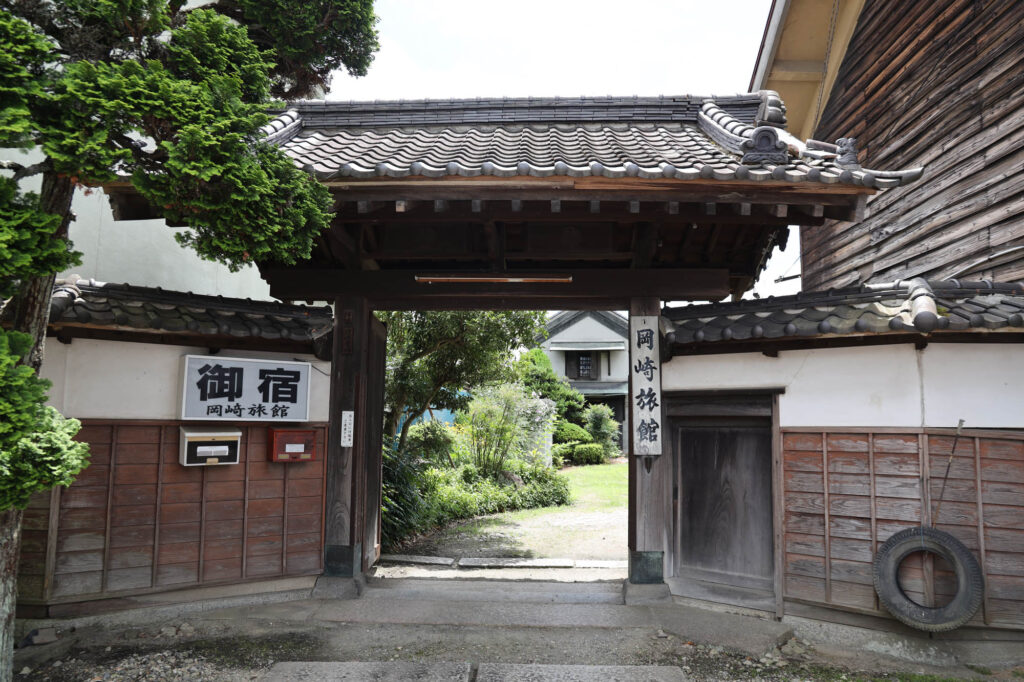
Okazaki Ryokan entrance at Watarimachi in Shiroishi. Photo by Mayu Kanamori
When I said that I remembered the Okazaki Ryokan standing on the street in front of the train station, Yoshie-san explained that there was an Okazaki Ryokan Honkan (main building) where the current Sennan Bank is situated, run by another branch of the family, and that her place was the Okazaki Ryoka Bekkan (annex). She said that the Okazaki Ryokan Honkan had closed some time ago.
Yoshie-san said that she remembered my grandfather Saburo being in her house eating eel with his sister, who was Yoshie-san’s mother-in-law. She said she does not remember what they were discussing. She did not get involved, because she was the ‘yome’ or daughter-in-law of the family.
Toshiaki-san showed me a family tree spanning nine generations, starting from the first generation born in 1820, and created in 1994. My grandfather Kanamori Saburo was adopted by Okazaki Sataro (5th generation) and his wife Yasu, who was the fourth daughter of Kanamori Hirokichi from Shiogama. Saburo’s biological parents were Kanamori Kyuzo and his wife Mie. Kyuzo was Yasu’s brother.
The first three generations on the family tree are the lineage of Yone, the wife of Okazaki Sazou. Yoshie-san explained that the first Okazaki came from Nagoya as a roof tiler and was working in Kesenuma. He came to Shiroishi and became involved in the wholesale fish business, then the inn business. Yoshie-san also remembered that the family members stood on the platforms as the trains came in and sold ekiben bentos or station meals in boxes.
Before we left, Yoshie-san gave me packages of umen noodles, a speciality of Shiroishi and a Shiroishi kokeshi doll.
Mayumi-san and I left the Okazaki ryokan about 11:45 am, and visited Hekisuien, which houses a tearoom and Noh theatre. We met Toshiaki-san’s wife, who was working in reception for a tea ceremony meeting. Mayumi-san and I attended the tea ceremony, then Mayumi-san took me to a restaurant near her home to try Shiroishi umen noodles.
At 2 pm we went to the Suruma-yashiki, an old Japanese style mansion built during the Meiji (1868-1912) and Taisho (1912-26) eras for the Watanabe merchant family, which was donated to the City of Shiroishi. It is an events and community centre near the train station and we went there to meet with Nishida Tomo-san, a poet and author of poet Suzuki Umeko’s (1898-1973) biography, Suzuki Umeko no Shi to Shogai (Doyo Bijutsu Shuppan Hanbai, 2020). Although Suzuki Umeko published three poetry collections and was known to leading poets of her time, she was better remembered as the proprietress of Daimi, a merchant family, and her poetry forgotten until Nishida Tomo published her biography.
I explained our residency project to Nishida-san, and what appeared to be a dearth of poetry places in the local area and asked her if she knew of any poets who wrote about Togatta Onsen or if she knew of any poetry, song or haiku monuments in Togatta. She thought there should be, as most onsen areas value literary visitors, and said she would see if she could find out or at least point me in a direction where I could find them.
At Suruma-yashiki we also met Tatsuta Fudiko-san, the manager of Shirosihi Machizukuri and Abe Keiji-san, who is working towards the preservation of the traditional craft of Shiroishi Washi paper making, and manages the Shiroishi Washi paper group, Kurafuto. Shirosihi Machizukuri looks after the Surumaya-shiki, Kurafuto and a carpark near the train station.
After our meeting, Mayumi-san took me to see the stone poetry monument with a poem written by Horiguchi Daigaku (1892 – 1981) for Suzuki Umeko, called Kokeshi, outside the White Cube, a town facility with a concert hall and sports centre. Horiguchi Daigaku was a poet and translator, who is known for introducing French surrealism to Japanese poetry and for translating over sixty-six French poets’ works into Japanese.
Mayumi-san took me back to my car and gave me bread from her favourite bakery and Zao sake to take back for Martin. I asked her about Aoso-san, the mountain, and she said that as children they all thought it was a landing place for UFOs. Before I returned to Togatta, I went back to the road by Shiroishi train station and photographed the Sennan Bank where the Okazaki Ryokan Honkan used to be.
I left Shiroishi at 4:15 and drove back to Togatta following National Highway 4 to Zao-machi, then on to Prefectural Road 12, and returned to the studio before 5pm.
At 6 pm Martin and I went to buy takeaways at Satoh-san’s home Taiwanese teahouse and record company, Manyaocya Records, where Intan was having a pop-up exhibition and serving homemade tempeh nasi goreng. Other than Intan and Satoh-san, there were three other couples. One couple were Intan’s friends who were visiting for the day, and two other locals, including Chiaki-san and Masafumi-san from the other evening, and another with two children, to whom we were not introduced. Masafumi-san gave us some of his home-grown organic potatoes and kale.
It was too late for the Kami-no-yu, so we soaked our feet in the ashiyu outside, and turned off the lights at 8:30 pm.

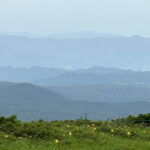

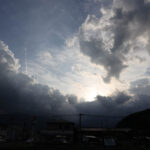
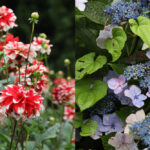


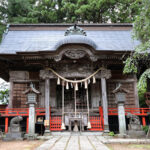
Recent Comments